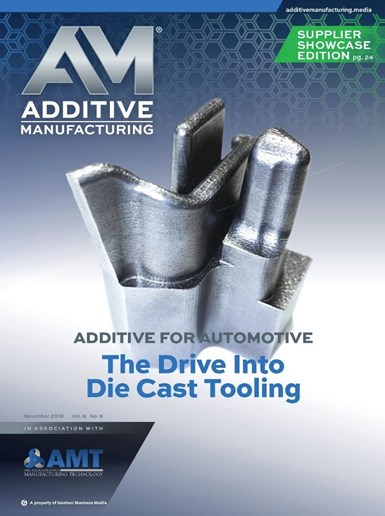Is 3D Printed Tooling a Solution for Die Casting?
After tackling the 3D printer, material and design, there's still one challenge left for Exco Engineering: convincing customers.
Share




Die casting is a particularly harsh operation. The process involves forcing molten metal into a mold cavity at high pressure, and is commonly used to make automotive parts such as engine blocks, wheels and engine cradles. The tooling that produces these parts must be durable, and buyers are not likely to trust a new process easily. In other words, die cast tooling is not an obvious place to experiment — but the challenge of the process makes it exactly the kind of application that is ideal for testing the limits of metal 3D printing.
This is what Exco Engineering (located in Toronto) has done over the last four years. In an initiative led by Wes Byleveld, now director of additive manufacturing, the company has not only proven that 3D printed tooling can withstand the die cast process, but that it also provides benefits to that process in the form of better cooling, reduced cycle time and longer tool life.

Wes Byleveld, director of additive manufacturing, stands near one of Exco Engineering’s EOS metal 3D printers. The company currently owns two for its die cast tooling work, and could add more in the future.
Getting to this point has been an uphill battle. Steps along the way have involved finding the right metal printer that could handle the work; a change in material; and pushing the limits of conventional design rules with simulation. Mr. Byleveld and his team still aren’t finished. The challenge Exco faces now? Explaining to customers the value that this 3D printed tooling offers.

Read the full story of Exco’s journey into 3D printed die cast tooling in this story from Senior Editor Brent Donaldson.
Read More in Additive Manufacturing
This article is the cover story of Additive Manufacturing’s November/December 2019 issue. Check out the digital edition for this story and others covering AM for aerospace, 3D printed cutting tools, better brackets and more.
Want to learn more about industrial 3D printing and additive manufacturing? Subscribe and never miss an issue.
Related Content
-
Arch Cutting Tools Acquires Custom Carbide Cutter Inc.
The acquisition adds Custom Carbide Cutter’s experience with specialty carbide micro tools and high-performance burrs to Arch Cutting Tool’s portfolio.
-
Eliminating Automotive Defects Per Million With Automated Visual Inspection
This automotive manufacturer virtually eliminated PPM defect complaints after implementing an automated visual inspection system at its facility.
-
The Best of IMTS24 In Photos (We Saved the Best One for Last!)
From quadruped robot dogs, to an in-booth putting green where you can test out a new golf putter, to a 3D-printed car and more, attendees enjoyed cutting-edge technology and innovations all week long. Take a look to see what (or who!) you might have missed this week!

.jpg;width=70;height=70;mode=crop)




















